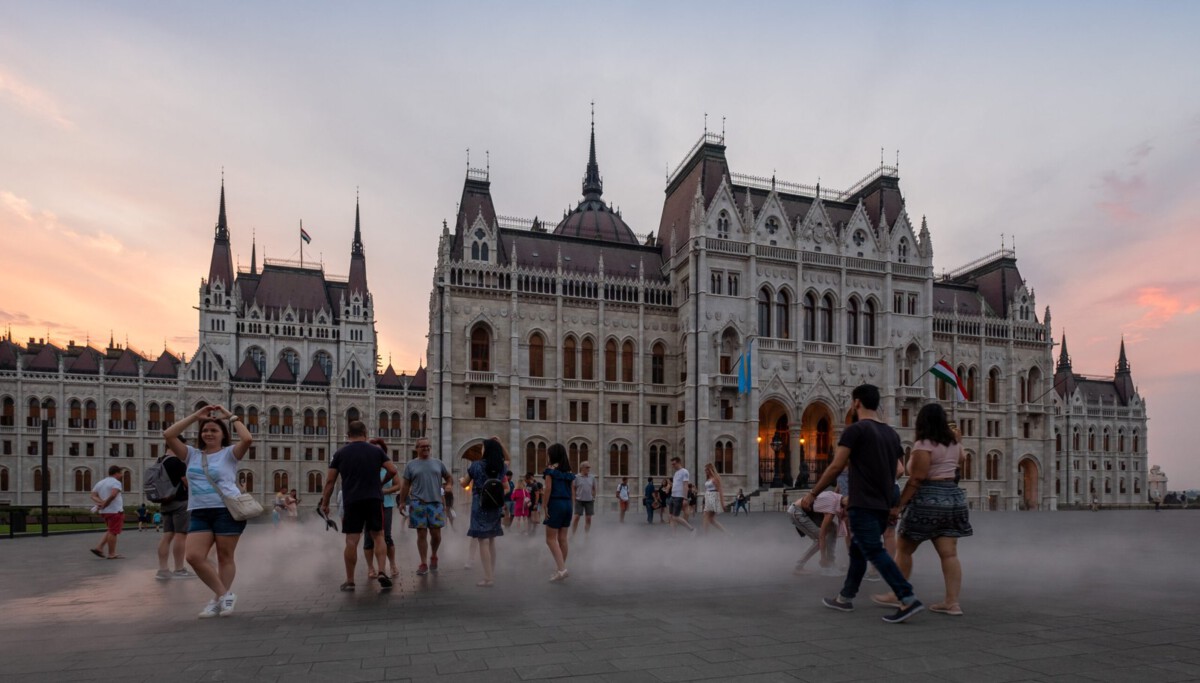Trade Tensions Spark Unintended Tourism Fallout

What began as a trade battle over steel, aluminum, and agricultural goods has now reached an unlikely victim: the world traveler. Since the United States ramped up tariffs on European products, a surprising ripple effect has swept across the Atlantic, touching not only factory floors but also some of the world’s most beloved tourist destinations. The cost of goods has risen, but so has the psychological barrier for Americans considering a European getaway. Suddenly, the dream of sipping espresso in Rome or strolling through Parisian streets feels more distant for many U.S. citizens. This isn’t just about economics—it’s about memories not made and experiences postponed. The shockwaves from these tariffs are now visible in places far from policy meetings and trade negotiations. For many in Europe, the familiar sound of American accents in city squares has grown noticeably quieter.
How European Economies Depend on American Tourists

For decades, American tourists have been a lifeline for many European economies, injecting billions each year into hotels, restaurants, museums, and local shops. Before the tariffs, the European Travel Commission reported that Americans made up nearly 15% of all international visitors across the continent. That’s not a small number—it’s millions of travelers, each spending on average far more than their counterparts from other regions. When these numbers dip, the impact is felt on city budgets, employment rates, and even in the daily lives of locals who rely on tourism for their livelihoods. The loss of American travelers has created a visible gap in revenues, forcing many towns and cities to reconsider their economic strategies. Countries like France, Italy, and Spain, where tourism can account for up to 10% of the GDP, are especially vulnerable to these shifts. The shock is not just financial—it’s deeply personal for the communities affected.
The Most Affected Cities: Paris, Rome, and Barcelona

Few places epitomize the magic of Europe like Paris, Rome, and Barcelona, and yet these very cities have been hit the hardest by the decline in American visitors. According to the Paris Convention and Visitors Bureau, hotel occupancy rates in Paris plummeted by 12% over the past year—a staggering figure for a city that typically thrives on tourism. Rome has seen a similar pattern, with local guides and small businesses reporting sharp drops in bookings. In Barcelona, where the summer influx of American travelers once seemed unstoppable, museums and restaurants now face empty tables and shorter lines. This is more than a loss of revenue; it’s a transformation of the local atmosphere. The excitement that tourists bring—laughter in cafes, bustling markets, crowded galleries—has faded noticeably. These cities are working hard to adapt, but the void left by American travelers is not easily filled.
Why American Travelers Are Staying Home or Going Elsewhere

Tariffs affect more than goods—they influence perceptions, too. As trade tensions mount, so do concerns about affordability and value for money. Many Americans, feeling the pinch of higher prices and a less welcoming climate, are rethinking their travel plans. According to the U.S. Travel Association, there’s been an 8% increase in domestic travel spending while international travel numbers have slumped. Instead of flying to Europe, Americans are choosing to explore U.S. national parks, coastal cities, and lesser-known domestic gems. Others are seeking out more affordable international destinations in Asia or South America. The trend is clear: tariffs have made European vacations less appealing for many, prompting a shift in where Americans decide to spend their precious travel dollars.
Economic Struggles for Local Businesses

For small businesses in Europe—family-run hotels, cozy cafes, local tour guides—the absence of American tourists is nothing short of alarming. A recent survey by the European Business Association revealed that 40% of tourism-dependent businesses reported a steep decline in sales directly linked to the drop in American visitors. These businesses often operate on thin margins, so even a small dip in tourists can mean layoffs, shortened hours, or even closures. The ripple effect extends beyond tourism: local suppliers, artisans, and farmers who provide goods to the hospitality sector also feel the pain. The economic ecosystem in these regions is intricate, and a blow to one sector can quickly spread to others. For many, the worry now is not just about surviving this year, but about how to adapt if the trend continues.
Government Initiatives to Revitalize Tourism

Faced with declining numbers, European governments are rolling out new strategies to lure visitors and support struggling businesses. Italy’s “Visit Italy” campaign, for example, focuses on attracting travelers from Asia and the Middle East by highlighting the country’s rich culture and history. Spain has increased marketing in Latin America, while France has launched special travel deals and cultural events aimed at new markets. Some governments are also providing financial aid or tax breaks to businesses hit hardest by the downturn. These measures are designed to cushion the blow and help the tourism sector pivot to new opportunities. The question remains whether these efforts can compensate for the loss of American tourists, who tend to stay longer and spend more than many other travelers.
How Travel Agencies Are Adapting

Travel agencies are on the front lines of this dramatic shift. Many have responded by crafting packages that appeal to budget-conscious travelers or by highlighting lesser-known destinations that offer better value. There’s been a 20% surge in inquiries about domestic and alternative international trips, according to several major U.S. agencies. This pivot requires agencies to rethink their offerings, develop new partnerships, and educate clients about fresh options. Some agencies are even offering incentives or flexible booking policies to encourage Americans to consider Europe again. The rapid change has tested the industry’s resilience, but it has also sparked innovation in how travel is marketed and sold.
What the Numbers Say About the Future

Looking ahead, experts paint a cautious picture. The World Travel and Tourism Council estimates that if trade policies remain unchanged, European countries could see a 10-15% drop in American visitors over the next few years. This isn’t just a temporary blip; it could mean a long-term shift in the makeup of European tourism. These projections have stirred debate among policymakers and business leaders, who worry about the broader implications for jobs, tax revenue, and even international goodwill. Numbers don’t tell the whole story, but they do highlight the urgent need for solutions that go beyond short-term fixes.
Culture Lost in Translation: Beyond the Economics

Tourism is about more than money—it’s about connection, understanding, and shared experiences. With fewer Americans traveling to Europe, the opportunity for cultural exchange is shrinking. Programs that promote mutual understanding, such as student exchanges or cultural festivals, depend on steady flows of visitors. Reduced tourism threatens these bridges between continents. Advocates warn that losing these exchanges could make the world feel a little smaller, a little less open, and a lot less interesting. The decline in tourism is a reminder that economic policies can shape the very way people relate to one another across borders.
Rethinking the Road Ahead

With so much at stake, the pressure is on for stakeholders to work together. Governments, business leaders, and travel organizations are being called to find creative solutions that restore confidence and reignite the spirit of adventure. Whether through policy changes, new marketing campaigns, or innovative travel packages, the goal is to bring back the vibrancy and diversity that American tourists have long brought to Europe. The road ahead is uncertain, but the determination to protect these connections remains strong.





